Our Vision
Conserving Agrobiodiversity for Food and Nutritional Security for all
Background
India is home to an incredible diversity of both wild and cultivated crops. Diversity is one of the main characteristics of nature and also the very basis of ecological stability. Right since the inception of our work the Centre for Indian Knowledge Systems (www.ciks.org) recognized that if we are to move towards sustainable agriculture based on indigenous resources then one has to build on traditional biodiversity. Our work started with an analysis of the then prevailing scenario and progressed to evolving various conservation efforts.
Current Scenario

Current Scenario
In the decades following the second world war, many governments in the developing countries have promoted the green revolution package of farming which has in practice meant the selection and large scale promotion of a small number of varieties of major crops such as paddy and wheat which have been selected based on the sole criterion that they can respond to heavy doses of application of chemical fertilisers by producing increased yield of grain.
This has led to a situation since the 1950s where most often farmers do not have access to stupendous varieties of traditional seeds that they were cultivating through the millennia and which contribute to their food and nutritional security.
In many of these cases the wide diversity and genetic stock of crops had slowly disappeared from the fields and partly found refuge in the state supported or industry supported grain storage banks. A majority of these banks were arrangements where the seeds were stored for long terms under extremely low temperature and only a small number of them were planted on from year to year. The thinking was that these seed storage mechanisms would primarily be dealing with scientists, research laboratories and institutions rather than with farmers who were original sources and suppliers of the seeds as well as the information regarding them.
The Indian situation

India is the home of one of the greatest diversity of both wild and cultivated crops. However in recent years, there has been a marked decline in the variety and diversity of cultivated crops such as rice and other cereals. With the advent of the Green Revolution, the emphasis has been to a large extent on the increase of yield; consequently a small number of paddy varieties selected for their capacity to give high yields in response to the application of high doses of fertilizer are being promoted. As a result of the above there have been several problems such as decline of soil fertility, resistance of pests to chemicals, decline of yields. There is an increasing realization that this approach is leading to a severe pollution of the land, water and air as well as several diseases that can be traced to chemical cultivation.

Problems of Monoculture
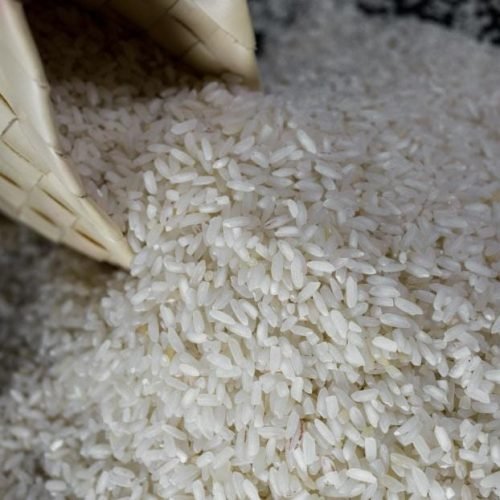
Problems of Monoculture
Industrialized agriculture favours genetic uniformity. Typically, vast areas are planted with a single, high yielding variety - a practice known as monoculture - using expensive inputs such as irrigation, fertilizer and pesticides to maximize production. In the process, not only tradition crop varieties, but long-established farming ecosystems are obliterated. Genetic uniformity invites disaster because it makes a crop vulnerable to attack- a pest or disease that affects one plant quickly spreads throughout the crop.
PAST CROP FAILURES DUE TO GENETIC UNIFORMITY
| Date | Location | Crop | Effects |
|---|---|---|---|
| 1846 | Ireland | Potato | Potato Famine |
| 1800 | Sri Lanka | Coffee | Farms Destroyed |
| 1940s | USA | U. S. Crops | Crops loss to insects doubled |
| 1943 | India | Rice | Great Bengal Famine |
| 1960s | USA | Wheat | Rust epidemic |
| 1970 | USA | Maize | $1 billion loss |
| 1970 | Philippines, Indonesia | Rice | Tungro virus epidemic |
| 1974 | Indonesia | Rice | 3 million tons destroyed |
| 1984 | USA (Florida) | Citrus | 18 million trees destroyed |
Source : World Conservation Monitoring Centre (1992). Global Biodiversity : Status of the Earth’s Living Resources (Brian Groombridge, ed.) Chapman & Hall, London.
The need to conserve
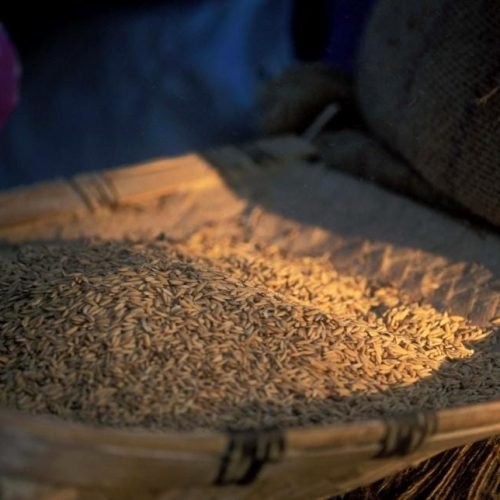
The alarming rate of ecological and biodiversity destruction has now been recognised and the need for conservation is acknowledged at the level of farmers and the state. There are a number of reasons for enlarging the diversity of cultivated crops such as rice and in this effort various traditional rice varieties used by farmers have a key role to play. Though traditional rice varieties are still preserved by a few farmers they are getting depleted at an alarming rate. It is becoming increasingly clear that to maintain biodiversity in farmers' fields an alternative system of seed supply has to be created. Although farmers greatly feel the need to regrow some of the traditional varieties they have lost, one has to be able to provide them with sufficient quantities of local seed varieties in order to fulfil this need. It is in this context that conservation and upscaling of these varieties become an urgent need.

Biodiversity of Rice
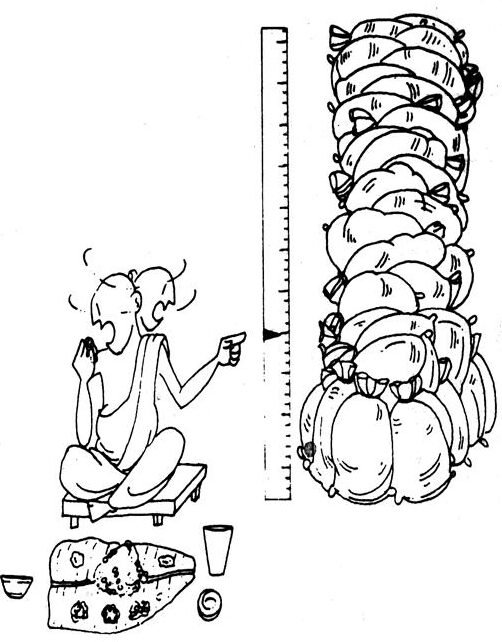
Biodiversity of Rice
According to Dr. Richharia, the well known rice scientist 4,00,000 varieties of rice existed in India during the vedic period. He estimated that, even today 2,00,000 varieties of rice exist in India - a truly phenomenal number. This means that even if a person were to eat a new rice variety every day of the year he would live for over five hundred years without reusing a variety. Every variety has a specific purpose and utility. Dr. Richharia has collected and identified 20,000 types of rice in the Chattisgarh area of Madhya Pradesh alone.
Insitu and Exsitu Conservation
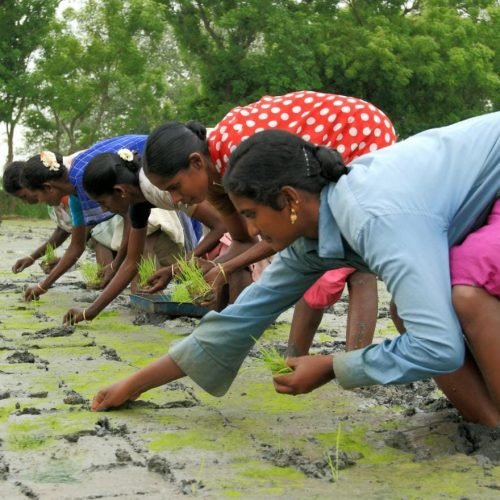
Insitu and Exsitu Conservation
There are two types of seed conservation efforts possible. One is the ex situ conservation and the other is the in situ conservation. Ex situ method of seed conservation is a formal method where seeds are preserved in gene banks in cold storage. Conservation is done outside the natural habitat of plants. In situ conservation maintains plants and crops in their natural habitats. This allows the evolutionary process that shaped their genetic diversity and adaptability to continue and develop. This is extremely important for areas where traditional farming is still prevalent and also for crops that are often enriched by gene exchange with wild relatives. In the context of agriculture. in situ conservation is basically on farm conservation of cultivated crops. This type of on farm conservation of genetic resources is successfully carried out across the world by decentralized Community Seed Banks (CSBs).
Comparison of a formal and a community seed bank
| S.No. | Gene Bank | Community Seed Bank |
|---|---|---|
| 1. | It is the conventional seed bank | It is the farmers’ seed bank. |
| 2. | This is the formal system for seed conservation | This is the informal system which is an integrated one |
| 3. | Seeds are stored under cold conditions | Seeds are conserved under natural conditions as part of cropping patterns |
| 4. | There is no room for co-evolution in this system | There is ample scope for co-evolution and it is continuous |
| 5. | Expensive high technology methods are used for maintenance of gene banks | Technologies used are simple and farmer friendly and it is maintained with limited resources |
| 6. | The main emphasis is on genes that may be useful in breeding | The emphasis is more on community seed supply which is an important component of sustainable agriculture |
| 7. | The focus is on exploiting for higher yields | The focus is mainly on integration of qualities for many individual cultivars |
| 8. | Market needs are given priority while breeding | Subsistence, food security and food priority is given more importance |
| 9. | It is capital incentive and highly centralized in approach | It is need based and decentralized. It is maintained at a low cost |
| 10. | The main beneficiaries are breeders, biotechnologists and researchers | The main beneficiaries are farmers, peoples’ organization, farmers’ organization, farmers’ association and the community |
| 11. | A very large number of varieties can be collected in one or a few locations, safety can be ensured for seed survival and viability by using high cost technologies such as storage in liquid nitrogen temperatures, very detailed studies and characterization can be carried out for a documentation of the varieties to protect traditional varieties and prevent biopiracy, interaction possible with plant breeders etc. | The number of varieties protected at each location is likely to be limited, risk of loss of varieties due to vagaries of weather or other natural disasters, limited amount of documentation and characterization possible, poor interface with plant breeders or the formal research system |
| 12. | High cost, usually the interface with farmers is rather poor or restricted | Excellent interface with the farmers, documentation of characteristics that may be considered important for the farming community (such as nutritional or therapeutic properties, fodder value, use in rituals, taste etc.) |
Our Story
Preserving Tamil Nadu’s Agrobiodiversity- 30 years of conserving and upscaling traditional rice varieties
Our initial effort was to get access to the traditional rice varieties. In every area of our work we undertook detailed survey to find out whether the traditional varieties of rice are already available in that area. We found that at least in some villages some farmers had the tradition of conserving these varieties for self consumption. We collected / purchased the seeds from these seed savers. Besides this gazetteers, district reports, traveller’s accounts, gave information as to what were the traditional varieties that were grown in these areas before the hybrids came in. We made an attempt to get these varieties back to the farmers from other parts of the taluka / district or other parts of Tamil Nadu if these varieties were still available.

Preserving Tamil Nadu’s Agrobiodiversity- 30 years of conserving and upscaling traditional rice varieties
Our initial effort was to get access to the traditional rice varieties. In every area of our work we undertook detailed survey to find out whether the traditional varieties of rice are already available in that area. We found that at least in some villages some farmers had the tradition of conserving these varieties for self consumption. We collected / purchased the seeds from these seed savers. Besides this gazetteers, district reports, traveller’s accounts, gave information as to what were the traditional varieties that were grown in these areas before the hybrids came in. We made an attempt to get these varieties back to the farmers from other parts of the taluka / district or other parts of Tamil Nadu if these varieties were still available.


Our Vision
Conserving agrobiodiversity for food and nutritional security for all
A Bija (seed) Yatra was undertaken by several voluntary organisations to document information regarding the traditional rice varieties available with the farmers and also to collect information regarding the traditional rice varieties. CIKS was also part of this bija yatra and we collected information and seeds during this yatra.

Our Mission
Conserve and upscale cultivation and marketing of atleast 100 nutritionally and therapeutically important traditional rice varieties of Tamil Nadu
Make available good germplasm of all these varieties in a decentralized fashion and create a network for the same
We also participated regularly in agriculture fairs and festivals, where we displayed traditional rice varieties and also exchanged varieties with farmers. Information regarding our efforts was distributed in the form of pamphlets which brought us in touch with more farmers who were interested in conserving these varieties and also with farmers who were conserving these varieties.
We also made attempts to get access to some traditional rice varieties from the rice research stations of Tamil Nadu such as Tirurkuppam, Ambasamudran and Aaduthurai.
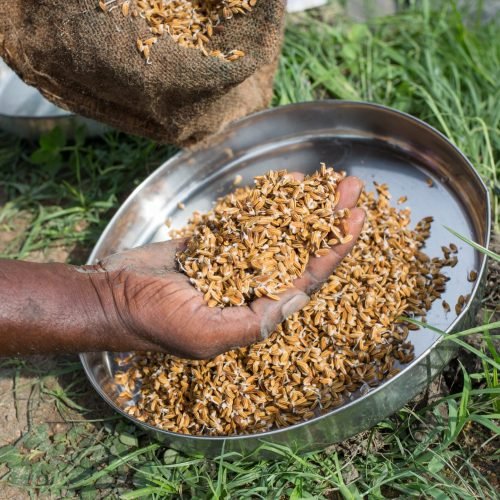
During the course of our work for the last 30 years on traditional seed conservation, we have collected more than 160 varieties of paddy suitable for cultivation in Tamil Nadu. We have a network of farmers who cultivate and conserve them year after year. The farmers choose to cultivate one or two varieties depending on the soil type, irrigation facility and agroclimatic region to which they belong. However, all these varieties have to be conserved year after year. These varieties also need to be conserved in more than one location so that they are not destroyed due to the vagaries of climate. Besides this we also experiment with any new variety that we get and cultivate it for at least a few seasons before passing it on to the farmers. Sometimes we also gets access to rare varieties and the amount we get may be only a handful (say a few grains). These have to be cultivated with great care and propagated. In addition to all these, we also need places where these varieties can be cultivated year after year and farmers can come and take a look at the standing crop and decide for themselves what they would cultivate. For all these purposes in situ conservation work was started first in collaboration with farmers in different parts of Tamil Nadu. Then our in situ conservation centre was first established in Thiruporur in leased land. In late 90s, the work shifted to Anjur in CIKS land and since 2000, the work is carried out in Sukkankollai, the experimental farm of CIKS and also in selected farmers’ fields.
Our Team

Mr. A V Balasubramanian
Director of CIKS
Mr. A V Balasubramanian
Director of CKIS
Mr. A V Balasubramanian (Director of CIKS) is one of the founding trustees and is currently the Director of the Center for Indian Knowledge Systems (CIKS). He has completed his Post MSc Diploma in Molecular Biophysics at The Indian Institute of Science, Bangalore. He holds an honorary D.Litt. from Trans-Disciplinary University and a doctorate from Gandhigram Rural University, recognized for his work in indigenous traditions of Sciences and Technologies. He is devoted to exploring the contemporary relevance and applications of Indian Knowledge Systems, particularly in the area of sustainable agriculture.

Dr. K Vijayalakshmi
Research Director of CIKS
Dr. K. Vijayalakshmi
Research Director of CIKS
Dr. K. Vijayalakshmi (Research Director of CIKS) has obtained her Doctoral degree in Zoology. She was one of the founding trustees and is currently the Research Director of CIKS. She has conducted pioneering research on spiders controlling pests and authored the first guide on Indian spiders in 1993, inspiring subsequent studies in this field. She later shifted her focus to traditional rice varieties, researching their agronomic, nutritional, and therapeutic properties, and promoting their cultivation and awareness. Currently, she is also the Director of Sempulam Sustainable Solutions which is a social enterprise providing end to end solutions on sustainable organic agriculture

Mr. K Subramanian
Program Director, Chengalpet
Mr.K. Subramanian
Program Director, Chengalpet
Mr.K. Subramanian (Program Director, Chengalpet), a livewire of the team, did his Post Graduate Diploma in Commercial Horticulture and MA in Sociology. He seamlessly combines his agrarian background with a strong social conscience to promote sustainable agriculture. With nearly 3 decades of experience and expertise in organic farming, he has successfully converted mainstream farmers to adopt profitable sustainable practices. His vigilant supervision ensures the smooth progress of traditional rice cultivation and conservation efforts in the field.

Ms. Subhashini Sridhar
Program Director, Nagapattinam
Ms. Subhashini Sridhar
Program Director, Nagapattinam
Ms. Subhashini Sridhar (Program Director, Nagapattinam), an invaluable member of the team, possesses more than 20 years of experience in sustainable agriculture. She has completed her BSc in Agriculture and MBA in Human Resource Management. She has an exceptional ability to connect with both farmers and non-farmers, coupled with her award-winning work in agricultural restoration post-tsunami in Sirkazhi, showcases her empathetic approach and technical strength. She has also forged research partnership in this area with scientists at the agriculture college in Annamalai University, Chidambaram in Tamil Nadu. She impacts many farming families in Nagapattinam district, Tamil Nadu, while also assisting women self-help groups. She heads the farmer producer company Valanadu, which is also working towards cultivating and promoting traditional rice varieties.

Mr. S Vetriselvan
Program Coordinator
Mr. Vetriselvan S
Program Coordinator
Mr. Vetriselvan S (Program Coordinator) has obtained his Bachelor’s degree in Microbiology and serves as the indispensable bridge connecting farmers and CIKS. He actively engages himself in all the field activities and plays a crucial role in traditional rice conservation and cultivation.

Ms. K Parimala
Program Officer
Ms. K Parimala
Program Coordinator
Ms. K Parimala (Program Coordinator), With a Post Graduate degree in Plant Pathology and over two decades of hands-on experience in organic farming, she specializes in traditional rice cultivation and offers organic certification consultancy services. Her expertise extends to terrace and home gardening, catering to gardens of all sizes, and she excels as a passionate educator, particularly in training students and farmers.

Mr. R Manikandan
Farmer Coordinator
Mr. R. Manikandan
Organic Farmer
Mr. R. Manikandan (Organic Farmer), stemming from a farming background, he chose full-time farming despite a Post Graduation in Zoology. His extensive experience in traditional paddy conservation, provide invaluable first-hand insights for sustainable agriculture consulting. As a founding member of the Sirkazhi Organic Farmers Association, he excels in marketing organic products and persuading hesitant farmers to embrace organic farming

Mr. E Thanigachalam
Farm Assistant
Mr. Thanigachalam
Farm Assistant
Mr. Thanigachalam (Farm Assistant), is our dedicated field assistant with an incredible twenty three year journey with us. His hardwork and invaluable assistance makes him an indispensable part of our team, ensuring the success of our farming endeavors.

Mr. M Ganesan
Farm Assistant
Mr. Ganesan
Farm Assistant
Mr. Ganesan (Farm Assistant), also our hardworking field assistant, is a treasure trove of experience, providing invaluable support to our team. His service and twenty three years of expertise have contributed greatly to our success in traditional rice cultivation and conservation efforts

Ms. K.T. Lakshmi Alamelu Mangai
Accounts Manager
Ms. K.T. Lakshmi Alamelu Mangai
Accounts Manager
Ms. K.T. Lakshmi Alamelu Mangai (Accounts Manager), our administrative powerhouse, has a Bachelor’s degree in Maths and plays an important role in managing finance, accounts and ensuring compliance. Her efficient handling of key tasks helps in the seamless operation and smooth flow of the organization.
Collaborations and Partnerships
Current partners and collaborators
Current partners and collaborators
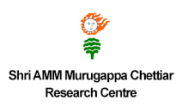





Other partners and collaborators




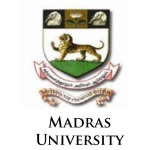


Farmer Partners
Farmers groups have been partners in various activities such as - Seed production, production of inputs and maintenance of units for processing and value addition.
These have included farmers clubs, SHGs (Self Help Groups), JLGs (Joint Liability Groups) as well as FPCs (Farmer Producer Companies). They are located in the districts of Kancheepuram, Chengalpet, Nagapattinam, Tiruvannamalai and Dindigul.

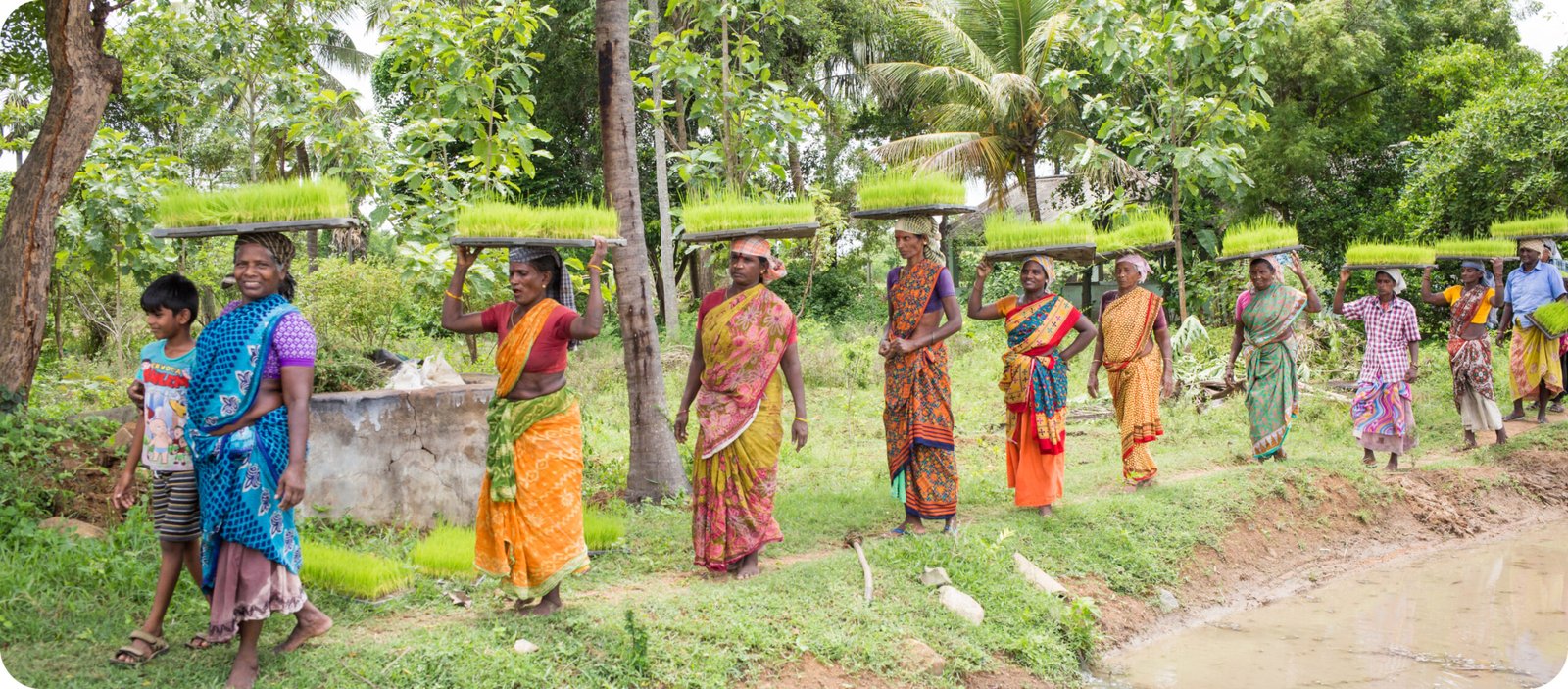
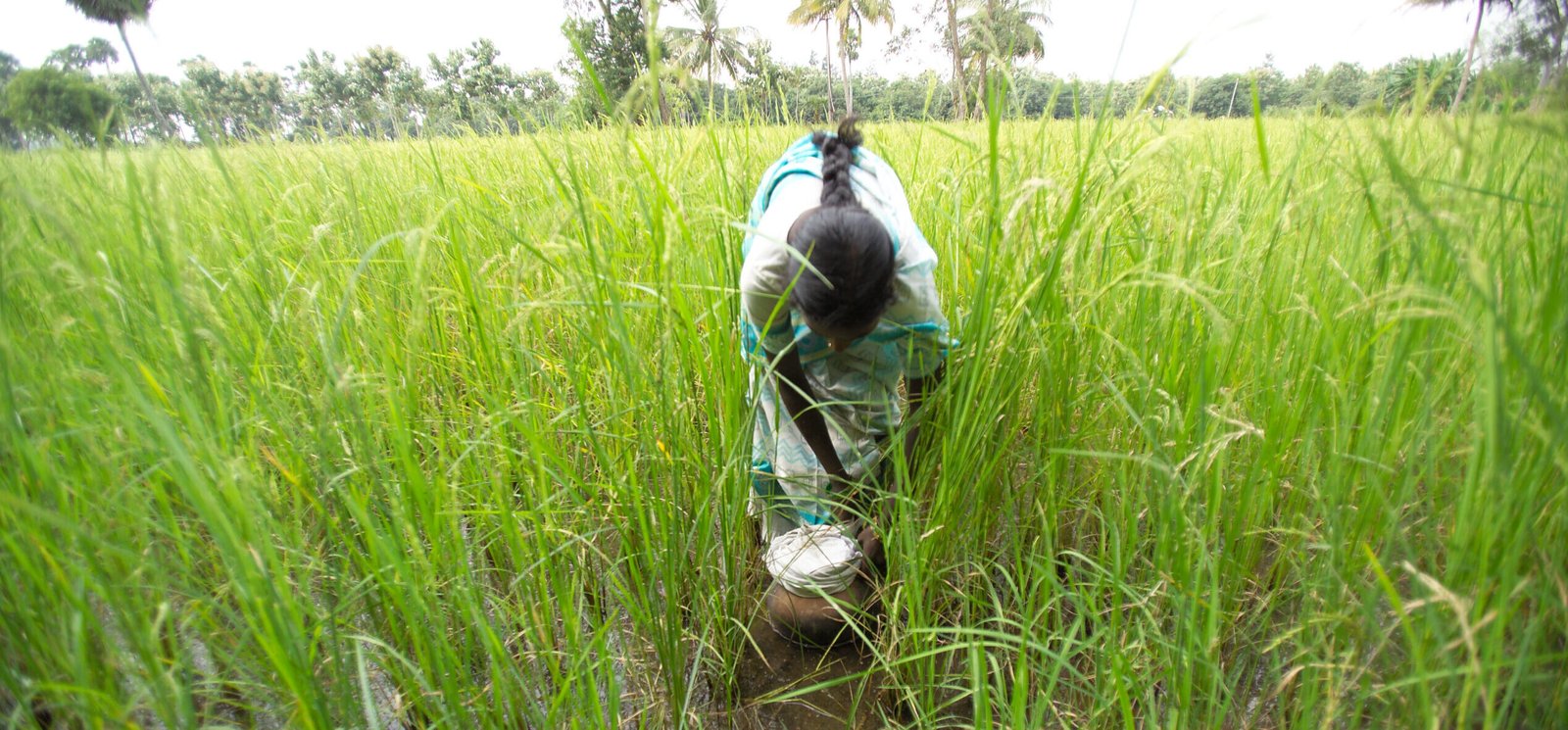
Partners for Marketing & Promotion
Marketing has been both at the wholesale and retail levels and involved farmers groups, producer companies as well as private companies. Sempulam Sustainable Solutions (www.sempulam.com), a social enterprise is our marketing partner. Sempulam procures products directly from the farmers with whom we are working. Branding and retailing is done by Sempulam.
Promotional efforts have involved partnership with well known chefs and hotels and restaurants.




Individual donors
Our individual supporters have included historians, lawyers, accountants, school teachers, Sanskrit scholars, sailors, home makers, sociologists, ecologists, molecular biologists, textile technologists, theoretical physicists, an aerospace scientist etc just to give a few examples.


